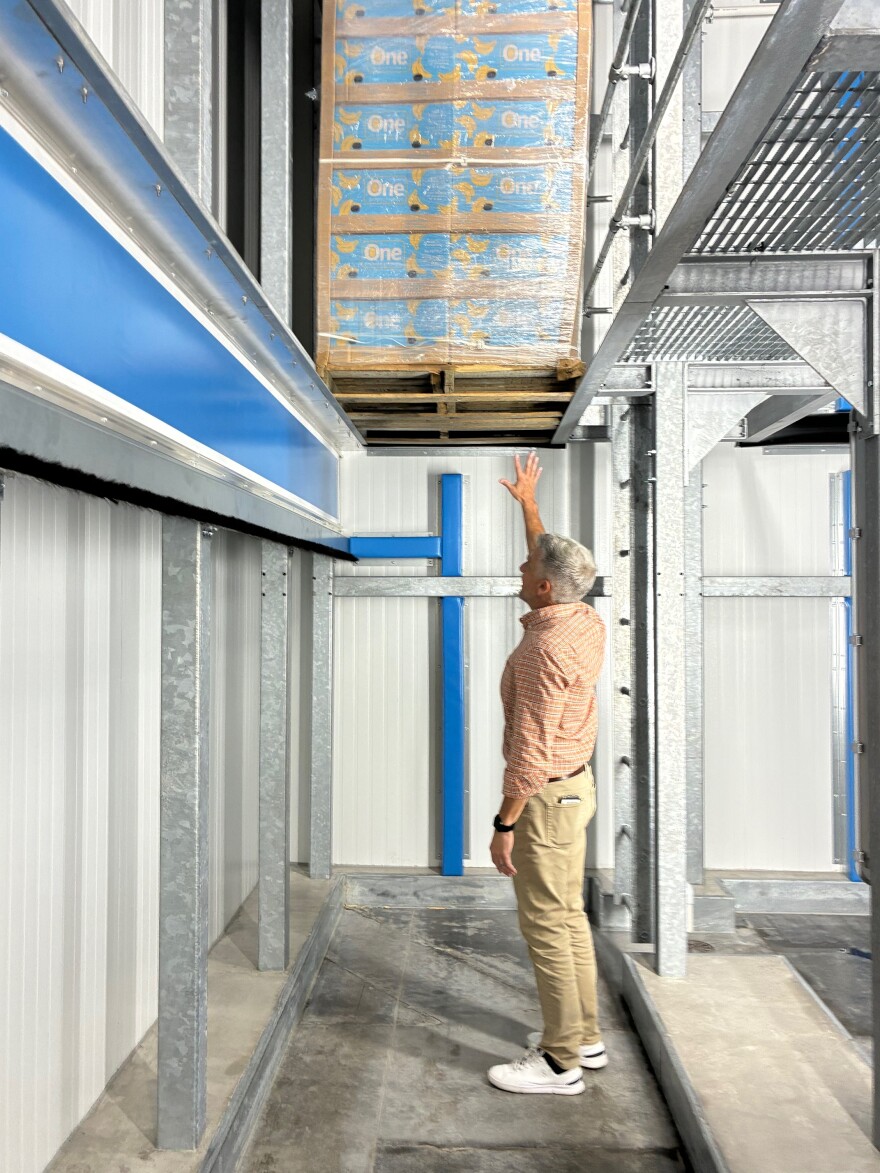Despite being from tropical climes, bananas are far and beyond the most popular fruit in the U.S. But getting them into the hands of Americans is a logistical challenge.
"It's a unique thing about bananas. You harvest them hard green," said Robert Adams, the president of One Banana North America. It’s a vertically integrated banana company based in the US, Guatemala, and the Netherlands. The company just opened a brand new facility: a ripening and distribution center in Wilmington, North Carolina.
"We chose Wilmington, North Carolina, because we wanted to find someplace close to a port," Adams said. That’s key for their logistical operations. They take those fresh harvested bananas from Guatemala, Ecuador and Peru, and pack them into air-tight containers that are chilled to 57 degrees.
"We harvest everything hard green in the tropics. Ship it here. It's like a seven-to-10-day journey. Soon as it gets here, load it onto a truck, onto a chassis, bring it to the facility, unload it. Take it straight into our ripening room, ripen it for five days, and then ship it straight out to our customers,” he explained.
The ripening facility is still mostly empty — they’ve left room for expansion, and may someday ripen the goods of other companies in addition to their own bananas. For the time being, it’s a cavernous facility, partially filled with hurricane relief supplies for the local food bank.
Through sealed metal doors are the ripening rooms, where those hard green bananas get warmed up a bit and given a special gas.

"The ripening rooms have to be airtight. So when we shut the doors, we're going to expose it to ethylene. We can't have the ethylene getting out of the room," he said.
Adam said there are holes in banana boxes so that fans can blow the ethylene into the boxes, triggering the ripening process.
Bananas produce their own ethylene, but fruit producers can also get it made commercially to control when and how they ripen.
Amy Meade from the NC Cooperative Extension said that the same Ethylene gas works on a lot of other fruits.
"The fruit starts interacting with that ethylene gas, you're going to start to see physiological or changes in the banana. So they'll start to the chlorophyll will break down. So they'll they'll start to lose that green color and turn yellow. You're also going to the fruits going to soften. So then starches are going to break down. That's where they're going to get their sweetness from," she said.
This is why you can put a ripe banana in a bag with other fruit to trigger ripening – although it won’t work on just any fruit.
"They're a type of fruit that ripens after they're picked. So things like peaches, bananas, you know, they are going to ripen on your counter," Mead said. "There are other fruits, like strawberries, blueberries, oranges, they need to be grown on the vine and picked at their peak ripeness.”
Those fruits, like citrus and berries, use a different hormone to ripen, one that gets into the fruit from its own vine.
But that brings us to the age old question: when is a banana actually ripe? "That's tough," Mead said.
"My husband [and] I have differing opinions on what makes a good banana. He likes them like that. You know, a little green, a little yellow. I like them when they have a couple of little brown spots on them," she said.
It’s something that Rob Adams at One Banana considers carefully: according to their documents, a banana that’s still a little green at the stem is the most appealing for their customers: that way they can ripen them at home to their taste. They’ll start ripening bananas at the new distribution center in the coming weeks, and shipping them to area Costcos and Lidls soon after.
And here’s a bonus banana fact from Mead: "The ethylene gas is primarily produced by the stem, and so sometimes you'll see in grocery stores, the stems will be wrapped. That's actually an effort to slow down that ripening process.”
So next time you want to stop your fruit from being relegated to banana bread, try covering the stem tightly in some plastic wrap.


